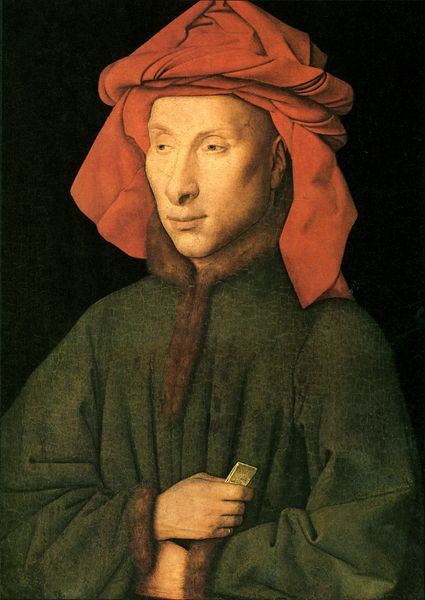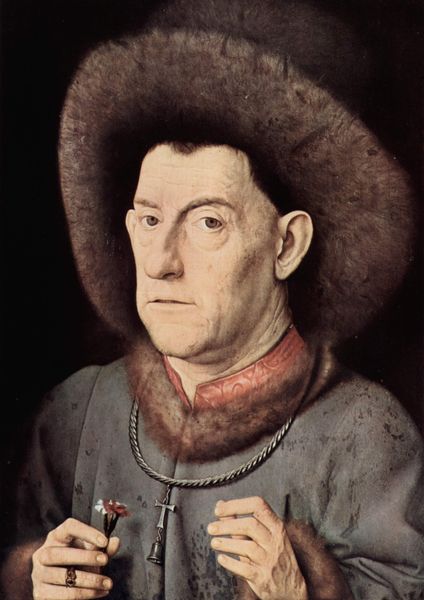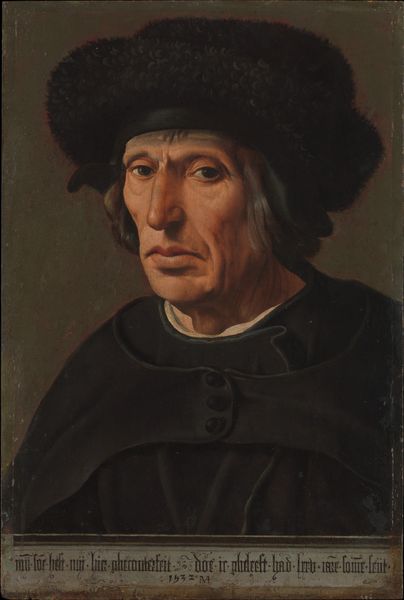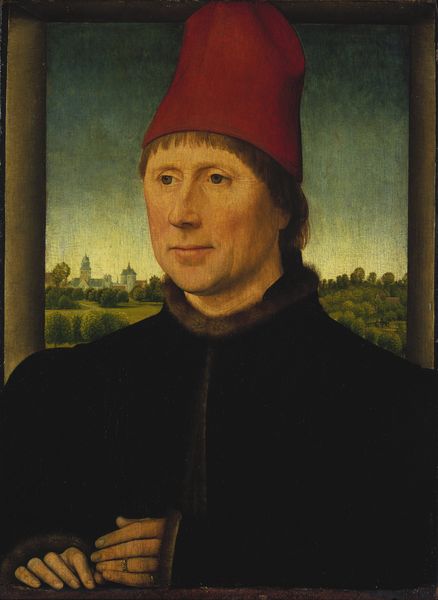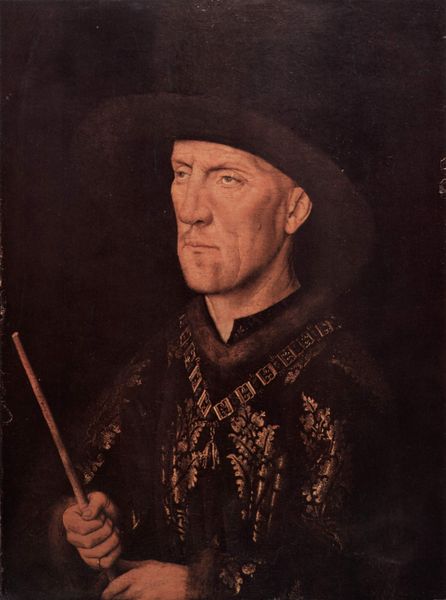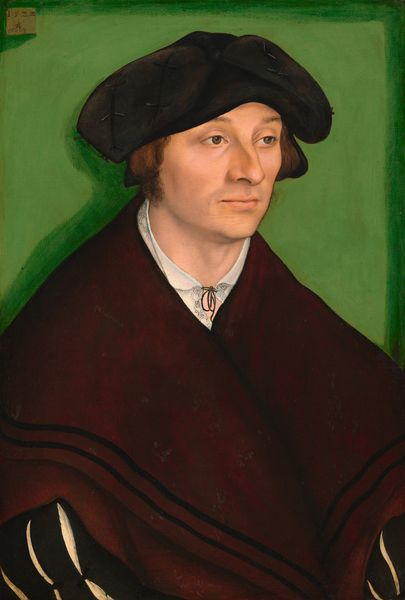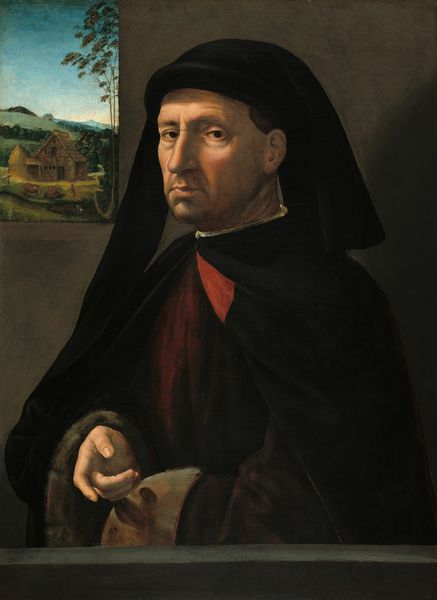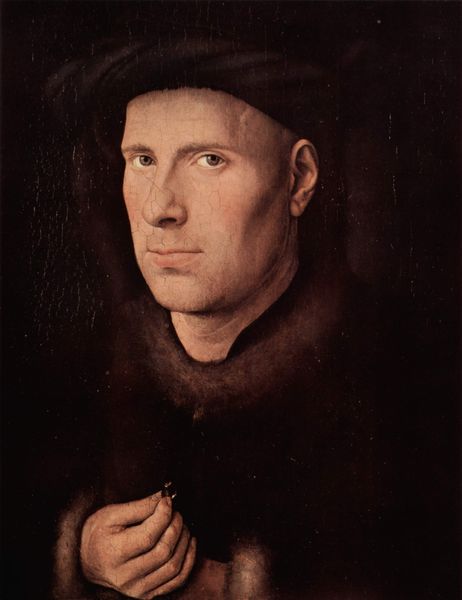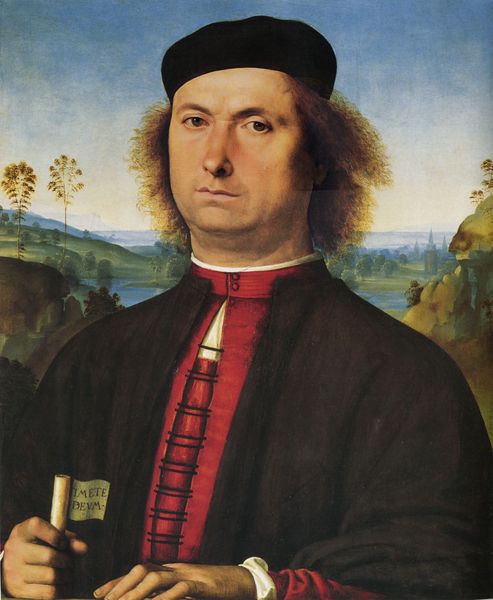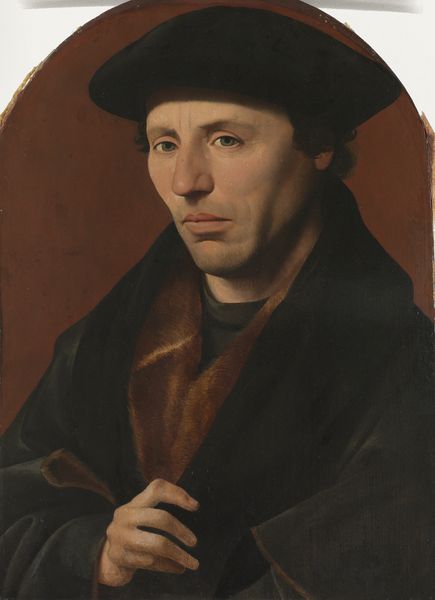
painting, oil-paint
#
portrait
#
self-portrait
#
painting
#
oil-paint
#
northern-renaissance
#
early-renaissance
Dimensions: 33.3 x 25.8 cm
Copyright: Public domain
Editor: This is Jan van Eyck’s "Portrait of a Man (Man in a Turban)," painted in 1433 using oil. The texture and layering are incredible, but that red turban really grabs my attention. What compositional elements stand out to you? Curator: Indeed, the vibrant, almost startling vermillion hue of the head covering commands immediate visual attention. Notice how van Eyck juxtaposes this vivid chromatic outburst against a ground of almost absolute darkness. This is more than mere background; it functions as a void, emphasizing the intricate folds and textural complexities achieved through the manipulation of oil paint. Observe, too, how the artist engineers a stark contrast in surface quality. Editor: Are you referring to the man's skin versus the fabric? Curator: Precisely. The rendering of the sitter's face exhibits a commitment to exacting realism, evident in the meticulous depiction of wrinkles, pores, and subtle chromatic variations—a manifestation, arguably, of his "humours". Yet, juxtapose this painstaking naturalism with the almost sculptural treatment of the turban; the latter appears almost tangible. Do you perceive how these elements, superficially disparate, congeal to form a unified aesthetic whole? Editor: It’s true that I see the overall construction of color and light playing with the textures now. What do you mean, an "aesthetic whole"? Curator: Consider the structural integrity inherent in van Eyck's deployment of light. Notice how illumination isn't merely representational; it is fundamentally constructive. Light doesn't merely illuminate surfaces but sculpts form, delineating planes and creating depth, achieving equilibrium across texture, colour, light, and structure, an aesthetic harmony emerges. Editor: This focus on formal aspects offers a new way to appreciate it beyond just as a historical image. Curator: Precisely. By analyzing the relationships between colour, form, and composition, we transcend the anecdotal, accessing a deeper level of engagement with van Eyck's artistry. It is in this orchestration of purely visual elements that the true significance of the portrait resides.
